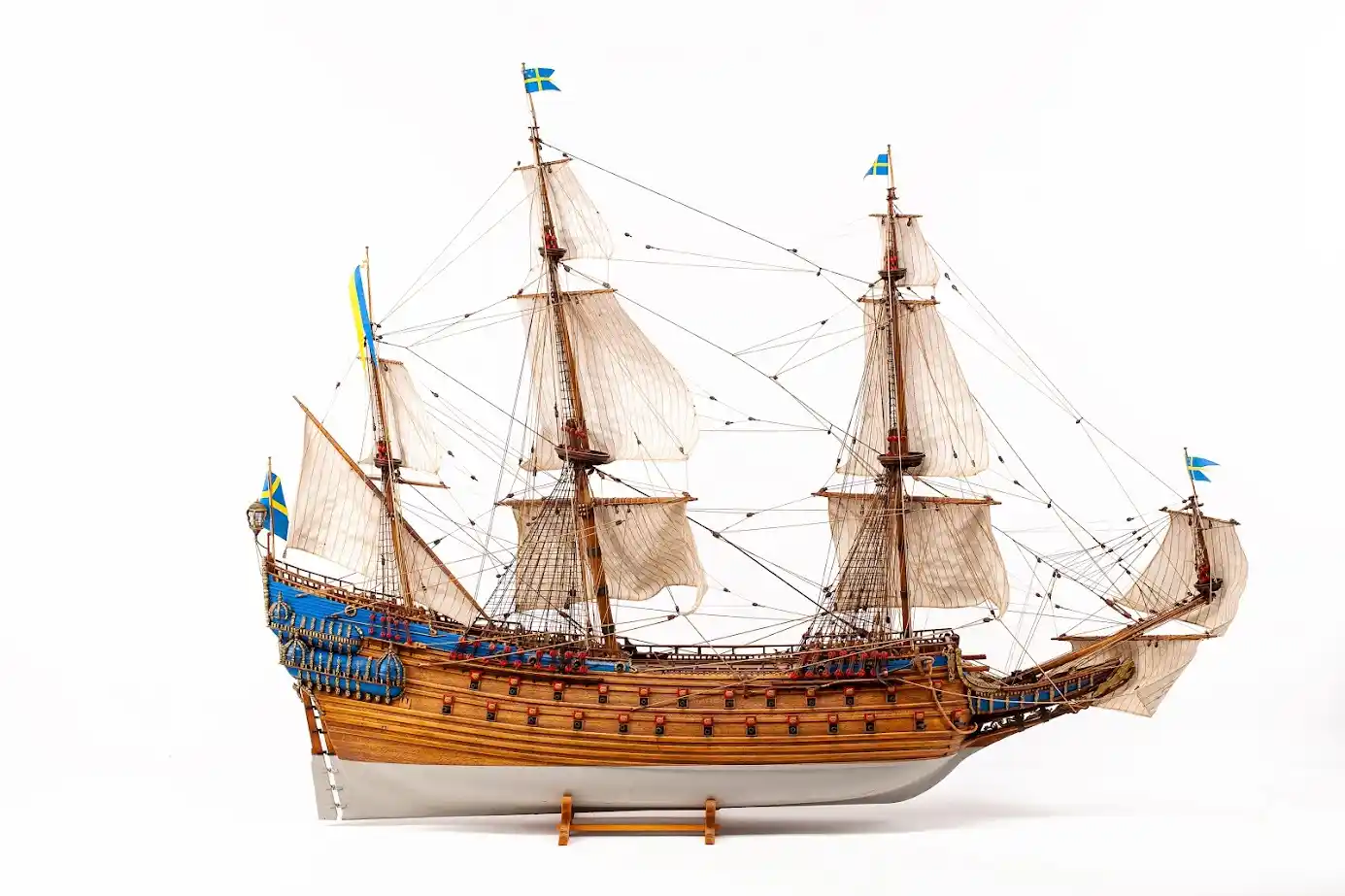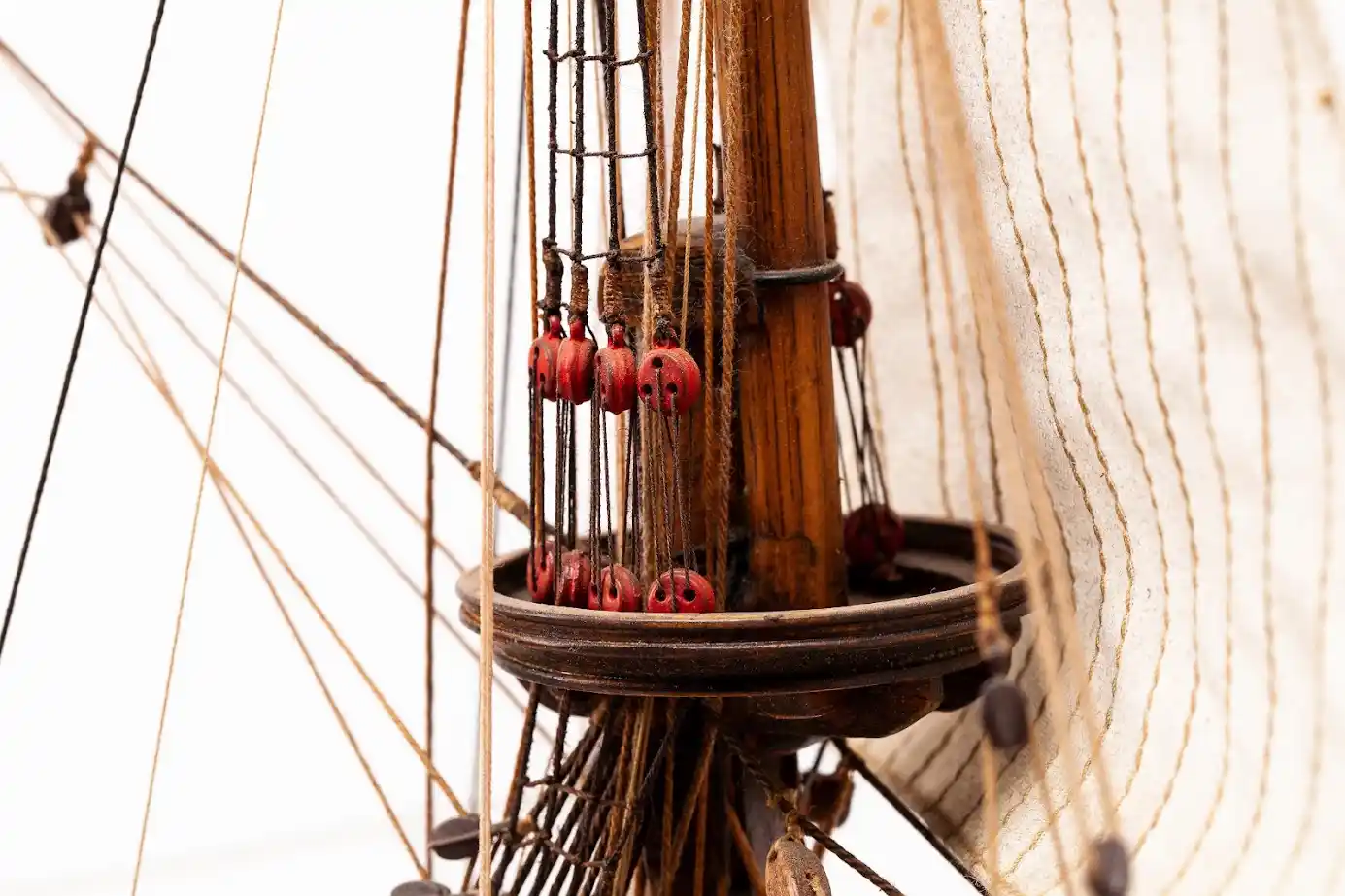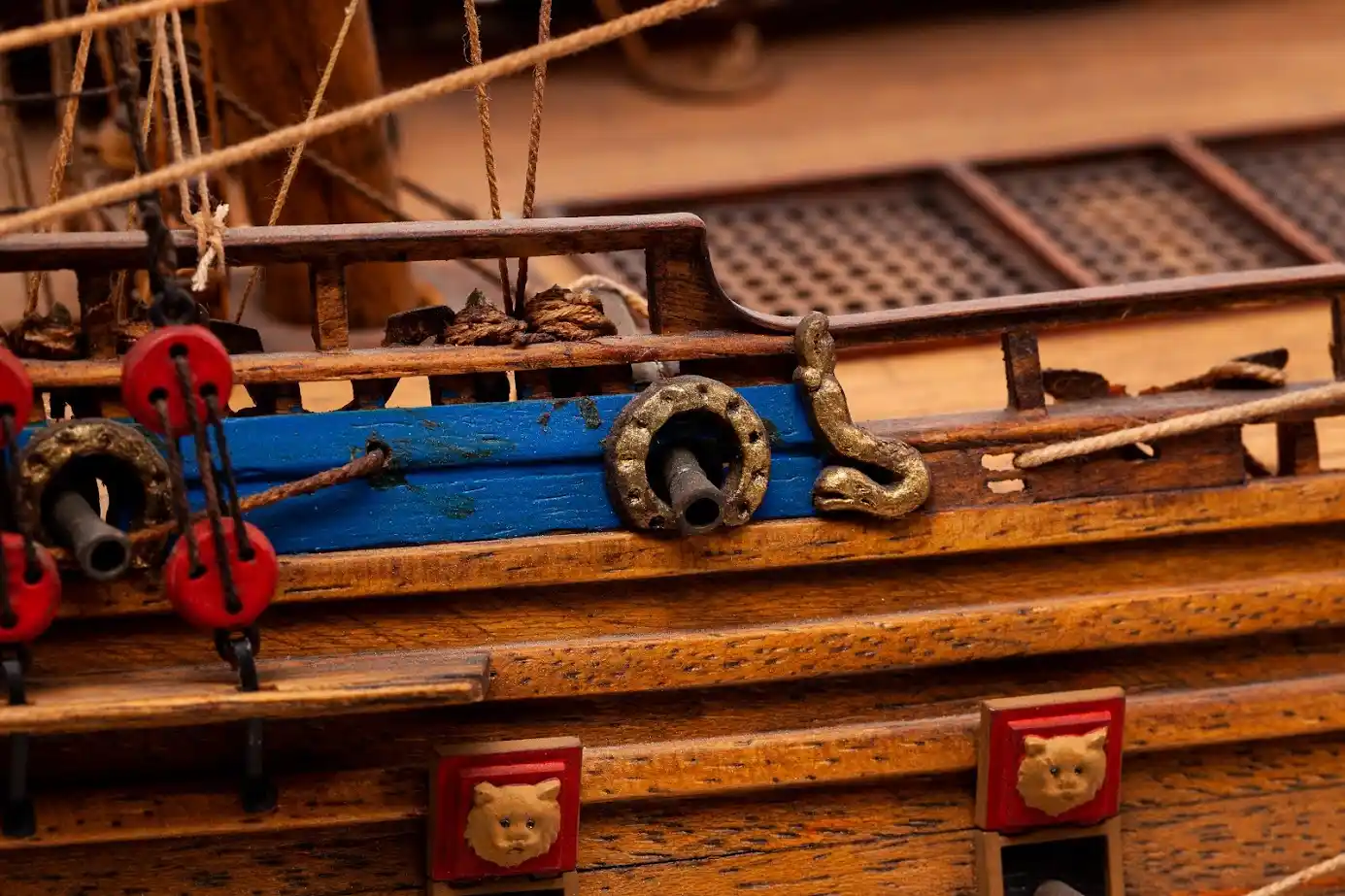Wasa
Wasa Scale model of a three masted ship
1:75 scale, Wooden hull. 31.1″H 38.58″L 7.48″W (expert)
The Vasa (or Wasa) is a Swedish warship built between 1626 and 1628. She was built on the orders of the King of Sweden, Gustavus Adolphus as part of the military expansion he initiated in a war with Poland-Lithuania (1621–1629). The Vasa was constructed at the navy yard in Stockholm under a contract with private entrepreneurs in 1626–1627 and armed primarily with bronze cannons cast in Stockholm specifically for the ship. Richly decorated as a symbol of the king’s ambitions for Sweden and himself, upon completion she was one of the most powerfully armed vessels in the world. However, Vasa was dangerously unstable and top-heavy with too much weight in the upper structure of the hull. Despite this lack of stability she was ordered to sea and foundered only a few minutes after encountering a wind stronger than a breeze.
The ship foundered after sailing about 1,300 m (1,400 yd) into her maiden voyage on 10 August 1628. She fell into obscurity after most of her valuable bronze cannons were salvaged in the 17th century until she was located again in the late 1950s in a busy shipping lane just outside the Stockholm harbor.She was salvaged in 1961, with a largely intact hull, and was housed in a temporary museum called Wasavarvet (“The Wasa Shipyard”) until 1988 before being moved moved to the Vasa Museum in Stockholm.
The ship is one of Sweden’s most popular tourist attractions and has been seen by over 29 million visitors since 1961 Since her recovery, Vasa has become a widely recognized symbol of the Swedish “great power period”.
Kit also includes laser cut wooden hull and wooden strips, fittings set, sails, rigging thread, plan and manual.
Paints needed in this model boat kit: BB#1, BB#5, BB#14, BB#16, BB#17, BB#18 + BB#40 Thinner
About: Wasa
More Information about The Wasa / Vasa
The Vasa, also known as the Wasa, was a Swedish sailing ship that was built in the early 17th century. It was commissioned by King Gustavus Adolphus of Sweden, who wanted to create a powerful navy to compete with other European countries. The Vasa was designed to be the most impressive and largest warship of its time, with a length of 69 meters and a height of 52 meters. It was also heavily armed, with 64 cannons on board. The ship was built with great attention to detail and was adorned with intricate carvings and colorful paintings, showcasing the wealth and power of the Swedish empire.
However, despite its grandeur, the Vasa’s maiden voyage on August 10, 1628, was a disaster. The ship had barely left the harbor when it suddenly tilted to one side and began to sink. The crew and passengers, including women and children, were thrown into the water as the ship went down. The cause of the sinking was later determined to be a design flaw, as the ship was too top-heavy and the cannons were positioned too high, making it unstable in the water.
The sinking of the Vasa was a major embarrassment for the Swedish king and a devastating loss for the country. The ship was meant to be a symbol of Swedish naval power, but instead, it became a cautionary tale of the dangers of overconfidence and poor design. The wreckage of the Vasa lay at the bottom of the sea for over 300 years until it was rediscovered in the 1950s by a team of marine archaeologists.
The Wasa’s preservation at the bottom of the sea was a stroke of luck, as the cold and low oxygen levels in the water prevented the ship from deteriorating. The salvage operation to bring the Vasa to the surface was a massive undertaking, requiring the construction of a steel frame around the ship and the use of pumps to remove water and mud. Finally, in 1961, the Vasa was successfully raised and brought to the surface, where it was carefully restored and put on display at the Vasa Museum in Stockholm.
Today, the Vasa is one of the most popular tourist attractions in Sweden, drawing in millions of visitors each year. The ship is not only a remarkable example of 17th-century shipbuilding, but it also provides a glimpse into the lives of the people who lived and worked on board. The intricate carvings and decorations on the ship have been meticulously preserved, giving visitors a sense of the opulence and grandeur that the Vasa was meant to embody.
In conclusion, the Wasa is a fascinating piece of Swedish history that has captured the imagination of people around the world. Despite its tragic sinking, the ship has been given a new life as a symbol of resilience and perseverance. Its story serves as a reminder of the importance of proper design and engineering, and the consequences of overlooking these crucial elements. The Vasa continues to be a source of pride for Sweden and a testament to the country’s rich maritime heritage.
Any videos on this website were found on Youtube and DO NOT belong to Billing Boats USA.
We thank those that produced them and hope that they enjoyed building their Model Kits. If you would like us to remove your video please let us know.

















